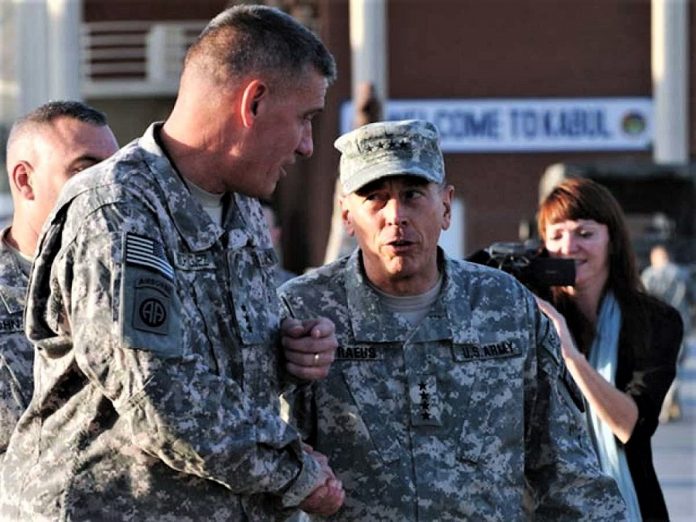“A Afganistán se le conoce como el cementerio de los imperios. No podemos tomarnos la historia a la ligera”, dijo en 2009 el General David Petraeus, recién nombrado comandante en jefe de las fuerzas de EE. UU. en Afganistán. A juzgar por lo ocurrido a los invasores rusos, que ocuparon el país entre 1978 y 1992, y ahora a los norteamericanos y la coalición de apoyo, incluida España, que lo hicieron entre 2001 y 2021, todos ellos derrotados, se confirma el pronóstico sobre la legendaria indomabilidad de los afganos, una leyenda que se remonta muchos siglos atrás. El autor de este documentado reportaje hace un interesante recorrido por la historia del país, da las claves que explican la situación actual y analiza las consecuencias de lo sucedido, clarificando en gran medida los últimos acontecimientos.

“Los combatientes más formidables del mundo”, que descienden de las colinas “como grandes rocas despeñándose, no corriendo, sino saltando […] Estos hombres son duros como clavos; pueden vivir con muy poco y solo llevan un rifle y unos pocos cartuchos”. (Andrew Skeen, general británico, 1932).
“Podemos resumir el carácter de los afganos en pocas palabras: sus defectos son el espíritu de venganza, la envidia, la avaricia, saqueadores y obstinados. Sus virtudes son: su pasión por la libertad, la lealtad, el cuidado de los más vulnerables (familia, tribu, clan), la hospitalidad, la resistencia, austeridad, paciencia, determinación y prudencia. Son menos propensos que otros países vecinos a la falsedad, la intriga y el engaño”. (Testimonio de un funcionario del Reino de Kabul, 1815).
“Hay una historia, que se contaba entre los oficiales británicos en la década de 1930 que ilustra el desprecio de los hombres de las tribus por los extranjeros que venían a ocupar su país. Un funcionario político estaba llevando a cabo una inspección en un distrito pastún de la Provincia Fronteriza del Noroeste, en las regiones limítrofes entre los actuales Pakistán y Afganistán. Durante la comida preguntó a uno de los jefes tribales del pueblo de qué lado se pondría su gente en caso de guerra entre Gran Bretaña y Rusia.
–¿Qué quiere que le conteste, lo que quiere oír o la verdad?”, preguntó el hombre de barba gris.
El oficial británico, preparándose para lo peor, aseguró a su anfitrión que solo deseaba escuchar la verdad.
–Entonces, se la contaré –dijo soltando una risilla– nos sentaríamos en nuestras colinas observándolos luchar hasta que viéramos a uno de los dos bandos completamente derrotados, ¡momento en el que descenderíamos para saquear hasta la última mula de los vencidos! ¡Alabado sea Dios!.»
“Afganistán es como una cabra entre dos leones” (en el contexto de rivalidad entre el imperio ruso y el imperio británico luchando por el control de Asia Central y el Cáucaso durante el siglo XIX). (Emir afgano Abdul Rahman Khan.1900).
En 1897 un por entonces joven periodista llamado Winston Churchill, futuro primer ministro británico, destinado en Afganistán con las tropas inglesas, escribió que aquel era un país en el que «todo hombre es un soldado» y en el que «la mano de todo hombre está contra la del otro, y todos a su vez contra el extranjero».
SIGLO XVIII, EL ORIGEN
El Afganistán que conocemos hoy surge en el siglo XVIII. Es un país que desde los tiempos más remotos ha estado determinado por su sistema orográfico, el Hindu Kush, un sistema montañoso que se extiende a lo largo de mil kilómetros del noreste al suroeste y que es la prolongación más occidental de las cordilleras del Pamir, el Karakurum y el Himalaya, donde se superan los 5.000 metros de altitud.
Afganistán ha sido en otras etapas un país mucho más avanzado de lo que creen muchos occidentales.
El otro elemento geográfico, que dificulta el acceso y el control por los ejércitos invasores está situado en el norte del país, es el rio Oxo, que se extiende a lo largo de 2.540 kilómetros, y que desemboca en el mar de Aral.
La geografía del país ha sido determinante en su historia porque debido a su ubicación estratégica, ha sido una encrucijada de imperios. Afganistán ha sido históricamente un estado tapón entre tres imperios: India (sureste), Persia (oeste) y Asia Central (norte) siendo esta última poblada sucesivamente por los escitas, turcos, mongoles, uzbekos y rusos.
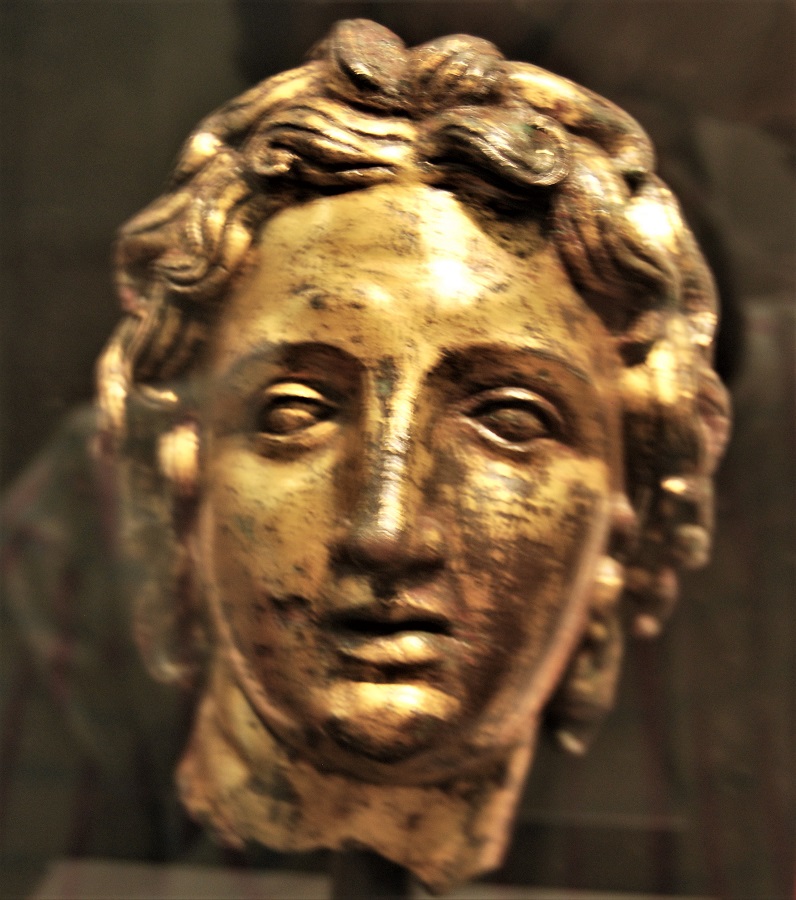
OBJETO DE DESEO
Así pues, Afganistán ha sido el objeto de deseo de imperios desde siglos, por citar tan sólo algunos de los más famosos líderes militares que la han invadido están el rey persa Ciro II el Grande, Alejandro Magno (331 AC) y Gengis Khan (1221-1222). Es un territorio convertido en una pieza estratégica del tablero geopolítico mundial y que lo seguirá siendo. Situada en el centro de Asia, comparte frontera con China, Irán y Pakistán y se encuentra en proximidad de India y Rusia, un espacio donde las potencias regionales son muy escrupulosas en el mantenimiento de sus áreas de influencia (Rusia, China …) un área desde siempre muy importante para las rutas comerciales, entre ellas la de la seda.
Las divisiones tribales y de clanes, geográficas y familiares, hacen que el país pueda ser gobernado únicamente por consenso y con una relación flexible entre el centro y la periferia.
Afganistán posee importantes reservas de minerales, como cobalto, cobre, cromo, oro, hierro, zinc gas, petróleo, hierro, piedras preciosas y sobre todo litio, las reservas de este mineral podrían ser equivalentes a las de Bolivia (que posee la cuarta parte de las reservas en todo el mundo. Hay también 74.000 hectáreas de amapolas que sirven para la producción de heroína. Afganistán produce el 90 % del opio en el mundo.
UN POCO DE HISTORIA
Siglo XVIII – Imperio Afgano (1747-1823)
La organización imperial será la primera forma de organización del Estado, que incluía en esa época, Afganistán, Pakistán, parte del este de Irán y el oeste de la India. Durante este período, la dinastía de Ahmed Sah dirigió el imperio. Una dinastía perteneciente a la etnia principal del país, los pastunes, quienes ocupan desde entonces los puestos de la Administración en la organización del Estado. Con el declive del imperio a partir de 1818, Afganistán se dividirá durante un corto período en pequeños reinos.
Siglo XIX. Emirato Afgano (1837- 1919)
Bajo esta nueva estructura administrativa, Afganistán prosigue su historia, que se desarrolla en un período que se ha denominado El gran juego (1837-1907), con la rivalidad entre el Imperio Ruso y el Imperio Británico para el control de Asia Central y del Cáucaso durante el siglo XIX. El Imperio Británico buscaba la expansión del Imperio Indio y el Imperio Ruso quería un acceso al océano indico y a las riquezas minerales de Asia central. Una situación de rivalidad con fuerzas interpuestas (como en la guerra fría) que se terminará con la derrota rusa durante la guerra ruso japonesa en 1905. En este contexto se producen las tres guerras anglo-afganas en las que los británicos ocuparon Afganistán para evitar que este país quedase bajo control ruso.
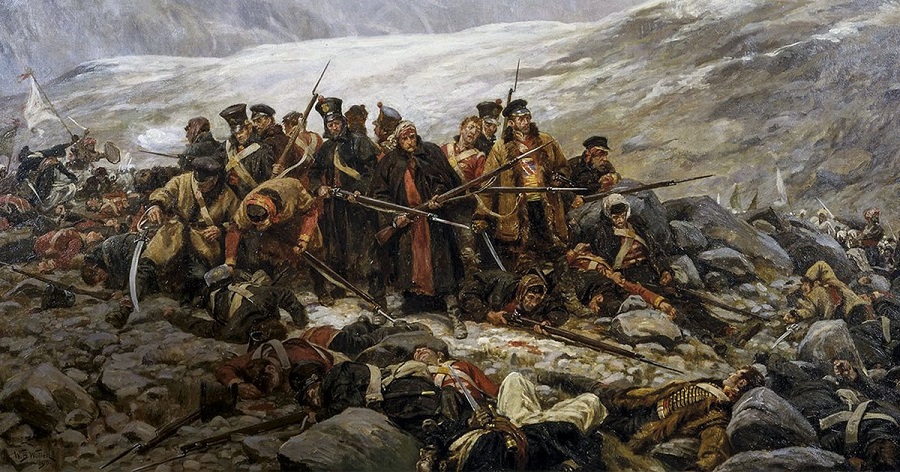
La primera guerra anglo-afgana (1839-1842) que terminó en un fracaso para los británicos. En la segunda guerra anglo-afgana (1878-1880) los británicos resultaron victoriosos permitiendo a los afganos mantener su soberanía interna a cambio de ceder el control de sus relaciones exteriores a los británicos que se comprometían a protegerles de cualquier ataque de una potencia extranjera. La tercera guerra anglo-afgana (1919) permitirá a los afganos recuperar el control de su política exterior y asumir plenamente su independencia.
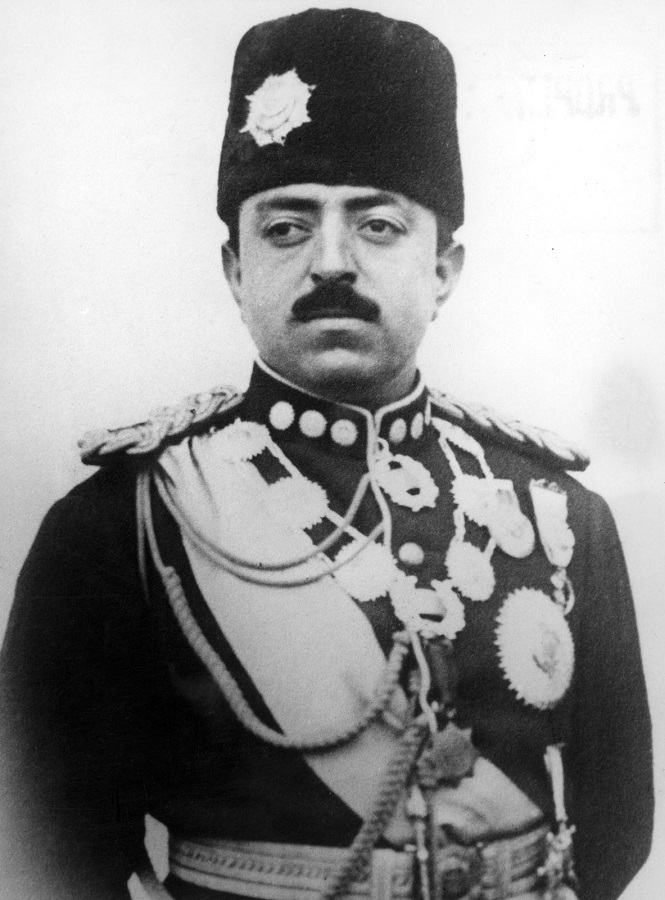
Reinado de Amanula Kan – Década de Modernización (1919 -1929)
En 1919, habiendo Afganistán recuperado su plena soberanía coincidiendo con la marcha de los británicos, bajo el reinado de Amanula Kan se inicia una etapa muy importante en la historia del país. En 1923 se establece la primera constitución afgana, se garantizan las libertades individuales, la educación laica para ambos sexos, clases para adultos analfabetos y nómadas, implantación de tribunales laicos, abolición de privilegios, las mujeres no estaban obligadas a llevar el velo, se impulsan las relaciones comerciales con Europa, se construye la primera línea de ferrocarril, así como presas y numerosas escuelas. Una revuelta conservadora obligará al rey a abdicar en favor de su hermano, que sería derrocado días más tarde por militares conservadores que ejercerían el poder solamente durante seis meses. Un nuevo rey fue proclamado, Nadir Shad, que será asesinado años después en 1933. Su hijo Mohammed Zahir Shah le sucedió en el trono.
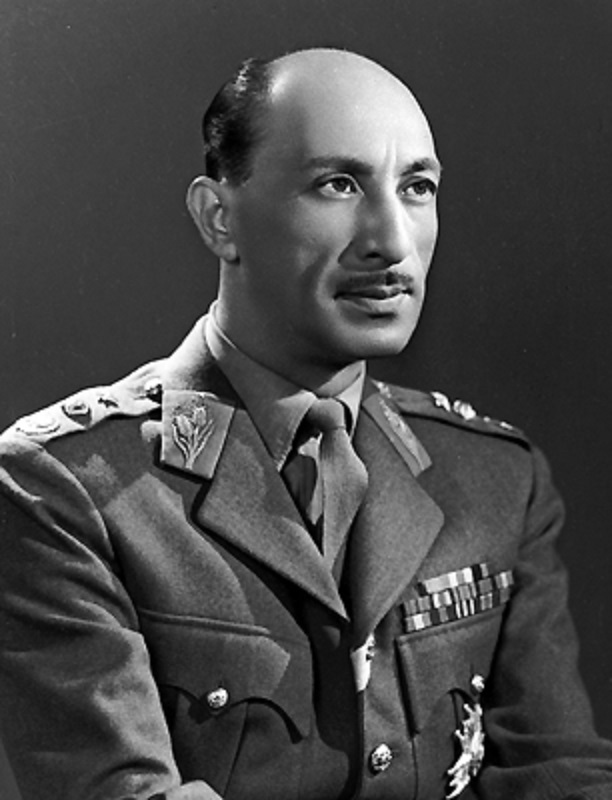
Reinado de Mohmmed Zahir Shah ( 1933-1973)
Zahir Shah es sin duda el dirigente afgano más importante de la edad contemporánea, bajo su reinado, el país conoció una importante era de estabilidad. Mientras su padre reinaba en Afganistán, Zahir Shah se formaba y educaba en Francia. Afganistán ingresó en la Sociedad de Naciones, pero manteniendo siempre la neutralidad (el país no participó ni en la primera ni en la segunda guerra mundial) y durante la guerra fría formó parte del grupo de países no alineados. En 1964 se introdujo una democracia parlamentaria limitada, se reconocieron la igualdad de derechos entre hombres y mujeres, el derecho de las mujeres al voto, al trabajo y a la educación. Se suprimió la obligación del uso de burkas. Se creó la Universidad de Kabul y los aeropuertos civiles de Kabul y Kandahar. Un aspecto muy importante en la gobernanza del país y de la estabilidad de este reinado era la consulta que el Rey hacía de la Loya Jirga (la gran asamblea de notables tribales y dirigentes locales). Ese equilibrio entre el centro y la periferia (autoridades centrales y locales) es algo que es completamente ajeno a la cultura occidental, que desconoce este aspecto tan importante de la cultura afgana y es una de las razones del fracaso en el intento de implantar por la fuerza un modelo de Estado occidental.
Soviéticos y norteamericanos han tropezado en la misma piedra y han salido derrotados.
Afganistán es un país descentralizado, donde la lealtad y los acuerdos y negociaciones con los líderes locales son esenciales, así como las deliberaciones de las shuras (consejos de ancianos que se reúnen para cuestiones puntuales) y la ya mencionada Loya Jirga (que es la estructura política nacional más representativa). Hay que destacar también que en 1966 por primera vez una mujer fue nombrada para dirigir el Ministerio de Sanidad.
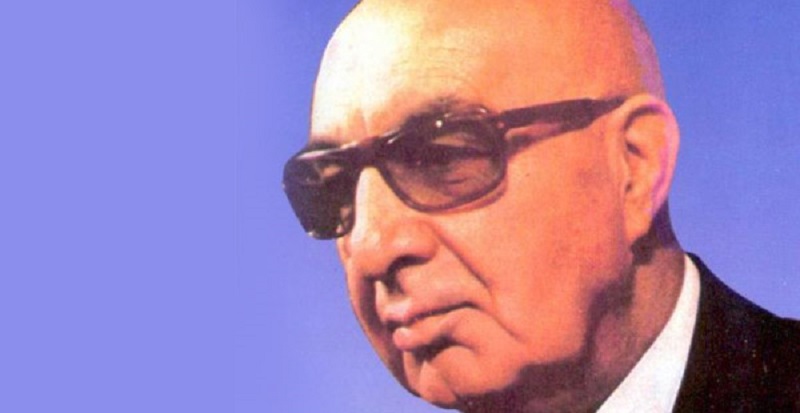
En esa misma época surgió una crisis económica, y varios malos años caracterizados por una sucesión de sequías y malas cosechas que favorecerán un clima de descontento, a lo que hay añadir el malestar de los sectores conservadores insatisfechos por el proceso de modernización. En este contexto, su primo y cuñado Mohammed Daud Khan, que había sido también su primer ministro, aprovechó la circunstancia que el Rey se encontraba en el extranjero para dar un golpe de estado que lo destituyó. Una República fue proclamada y Doud Khan ejerció el poder de forma autocrática hasta que fue asesinado en 1978.
A partir de ese momento los dirigentes del país ya serían afines a Moscú y en 1979 la Unión Soviética invadió Afganistán.
EL VIETNAM SOVIÉTICO
Guerra en Afganistán (1979 -1989) “El Vietnam de la Unión Soviética.”
Con el objetivo de mantener un gobierno comunista, la Unión Soviética, invadió Afganistán en 1979. Grupos de muyahidines (extremistas religiosos) comenzaron a combatir a los invasores con dinero y armas proporcionados por Estados Unidos, Pakistán, China, Irán, y Arabia Saudita.
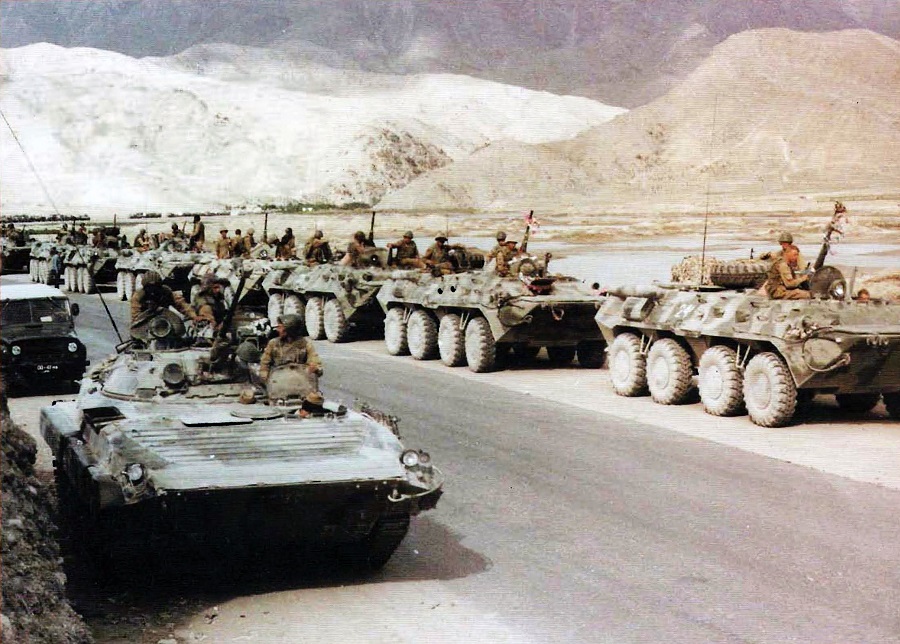
La invasión provocó la muerte de un millón y medio de personas y cinco millones de refugiados. Los soviéticos nunca consiguieron derrotar a los muyahidines en las zonas rurales, aunque controlasen ciudades y otros núcleos urbanos. Al final, los soviéticos acabarían retirándose derrotados de Afganistán diez años después.
Operación Ciclón (1979)
Este fue el nombre en clave del programa de la Agencia Central de Inteligencia (CIA) para reclutar a fundamentalistas islámicos (luego conocidos como muyahidines) contra el gobierno de la República Democrática de Afganistán (1978- 1992) y el Ejército Rojo (1979-1989).
Estados Unidos quería asegurarse que ningún otro país más que ellos, tuviese el control del Golfo Pérsico y garantizar así que sus fuerzas navales protegiesen el flujo de petróleo a Occidente. El otro objetivo del presidente Carter y su consejero de Seguridad Nacional Brezinski, era involucrar a la Unión Soviética en un conflicto largo y costoso, equivalente a lo que supuso la guerra de Vietnam para los norteamericanos.
foto reagan
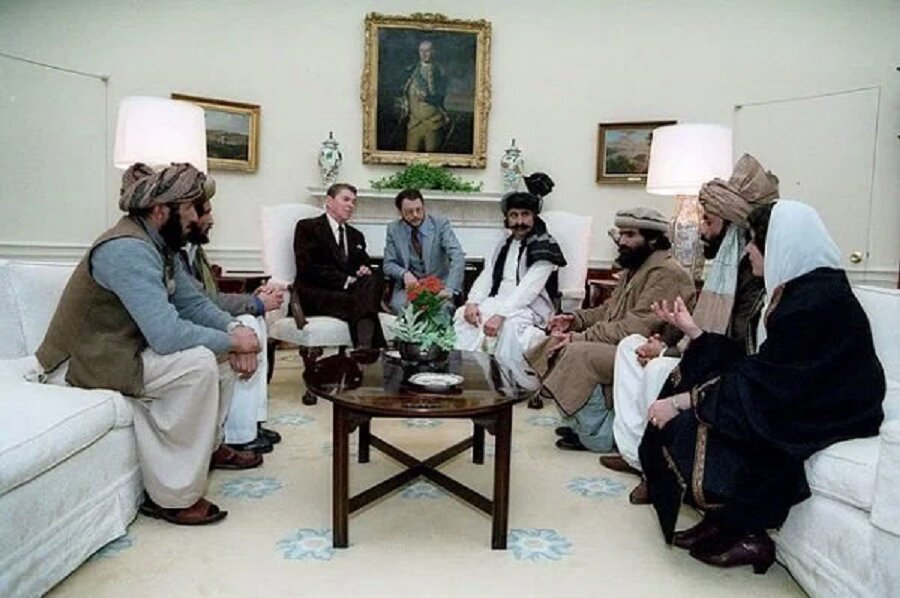
Esta política (Operación Ciclón) sería mantenida y ampliada por Ronald Reagan, quien llegaría a llamar a los muyahidines “luchadores por la libertad”.
El golpe de Estado comunista de 1978 en Afganistán
En el período que precede a 1978 nos encontramos con que las dos fuerzas antagonistas en el país son, por un lado, los comunistas, apoyados por los soviéticos, y por el otro, los islamistas, apoyados al principio solo por Pakistán y luego por otros países. Ambas fuerzas tienen un enemigo común, el Islam tradicional de Afganistán, mucho más tolerante, que tiene implantación local y está desconectado de poderes centrales, tanto políticos como religiosos.
Estos defensores del Islam de Afganistán eran modernizadores del JIA (Jamiat-e Islam Afganistán) y tenían el apoyo de intelectuales de Kabul, entre ellos Burhanuddin Rabbani, que llegaría a ser presidente de la República Islámica de Afganistán en 1992. Otro de los líderes del JIA era el famoso comandante Massoud, líder de la resistencia contra los soviéticos, que llegó a ser ministro de Defensa y fue asesinado en un atentado suicida en el norte de Afganistán dos días antes de los atentados del 11 de septiembre de 2001.
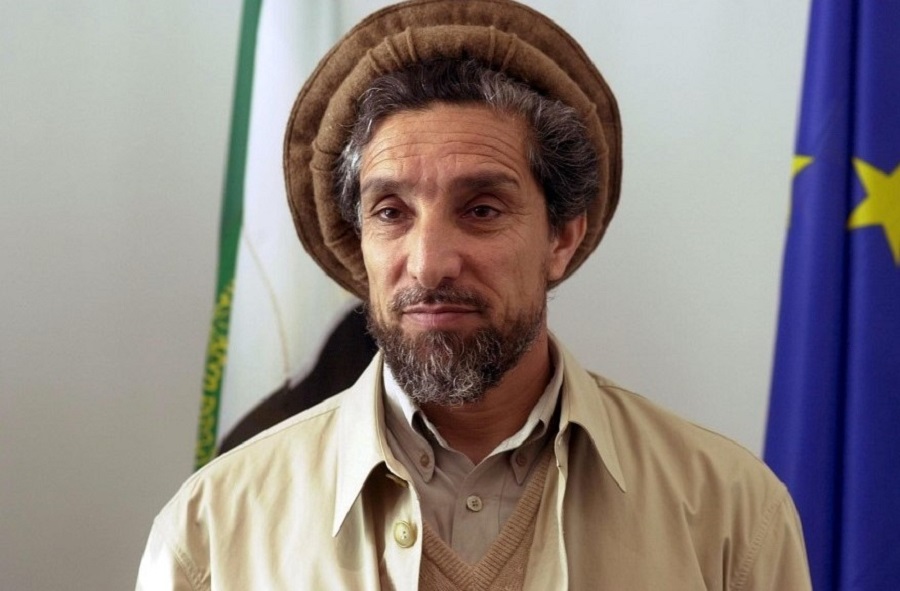
Serán los fundamentalistas islámicos, ajenos al Islam tradicional afgano, quienes introducirán en el país las tendencias más extremas de esa religión, el Wahabismo (Arabia Saudí) y el Salafismo en las madrasas y en los campos de refugiados, con ayuda financiera extranjera (Pakistán, Arabia Saudí). En este contexto surgirá el movimiento Talibán (“los estudiantes”) que se hicieron con el poder en 1996.
Hasta 2001 los vínculos entre talibán y Al Qaeda fueron cercanos. Con la victoria de los talibán (1996), los partidarios de un Islam afgano moderado y modernizador, Jamiat-e Islam Afganistán (JIA), habían perdido definitivamente cualquier capacidad de influencia. El período entre 1989 y 1996 se caracterizará por el enfrentamiento (las guerras civiles afganas) entre diferentes facciones en el interior del país.
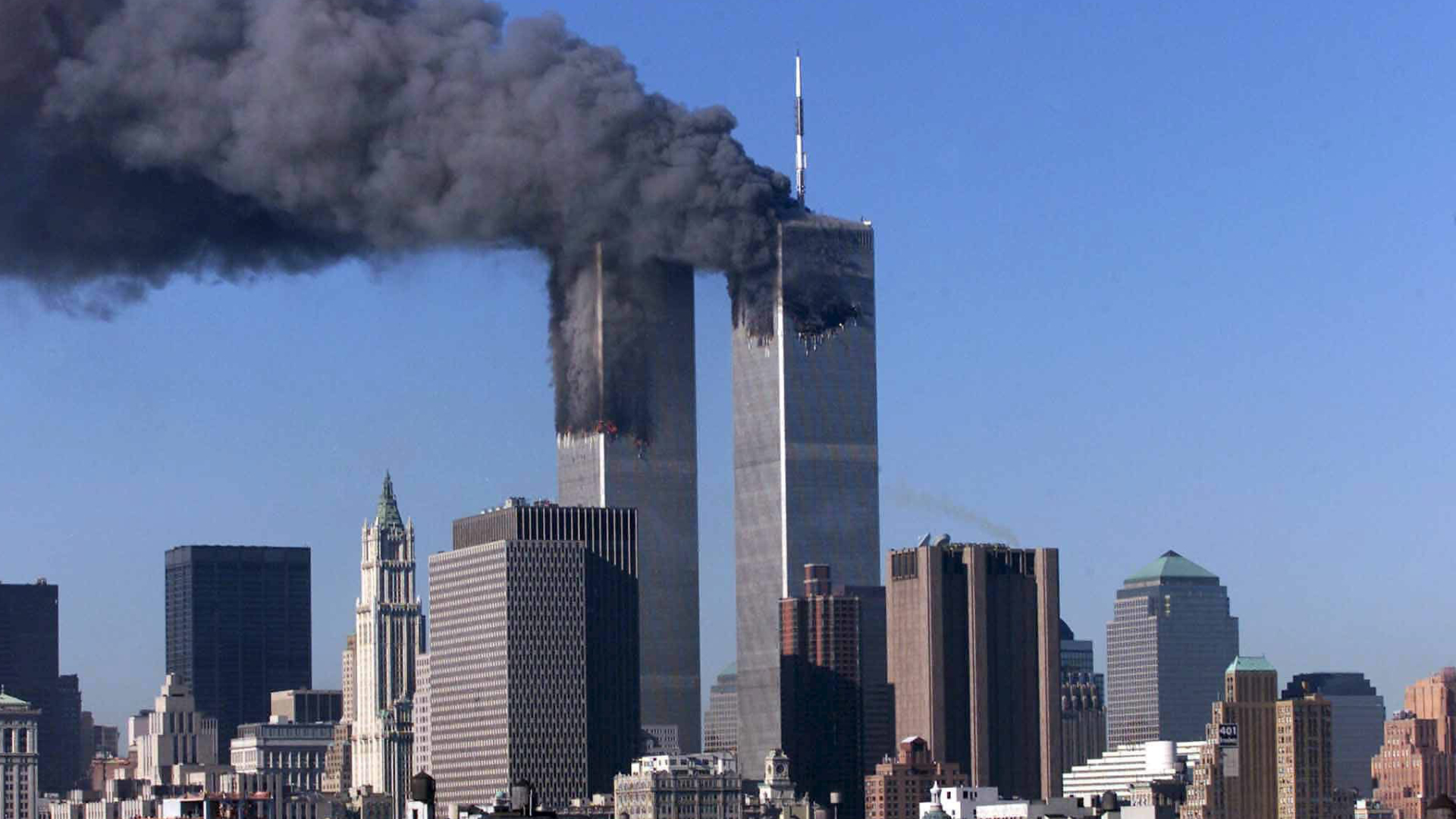
En respuesta a los atentados del 11 de septiembre y como venganza hacia la colaboración de los talibán con Al-Quaida, la OTAN, encabezada por los EE.UU., invadirá Afganistán (2001-2021)
LA VICTORIA TALIBÁN DE 2021
El último triunfo talibán ha tenido lugar el 15 de agosto 2021
Los talibán sólo han necesitado diez días para llegar a Kabul, a pesar de los 83.000 millones de dólares que los americanos habían invertido para organizar un ejército moderno en Afganistán. EE.UU. no había previsto el hundimiento tan rápido del ejército afgano y no pensaban que los talibán tenían preparada una estrategia ofensiva para llegar tan rápidamente a la capital.
Los americanos cometieron el error de enviar 100.000 soldados para capturar a 25 terroristas, la mayoría de los cuales, además, logró escapar.
De hecho, los talibán ya habían comenzado unas semanas antes a controlar puestos fronterizos estratégicos por donde pasa el aprovisionamiento para Afganistán, como los de Kandahar, Herat y la frontera de Tayikistán. Además, los talibán han ido negociando pacientemente con los líderes locales ofreciéndoles garantías y tejiendo alianzas.
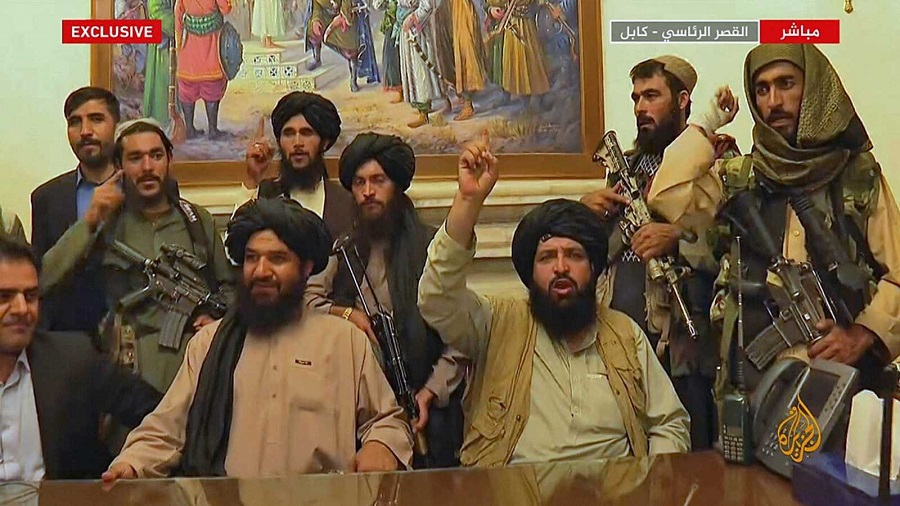
Las razones del rápido hundimiento del ejército afganos ha generado muchos debates, entre los que se pueden destacar dos conclusiones principales.
La primera, es la excesiva dependencia de los soldados afganos, carentes de autonomía en relación con las tropas aliadas, lo que se explica por el nivel de instrucción tan bajo de los aquellos, muchos son iletrados, por el armamento tan sofisticado y porque el ejército es muy dependiente de la fuerza aérea. Además, el liderazgo militar en el ejército afgano brillaba por su ausencia.
La segunda, la más importante y que explica el fracaso en el intento de creación de un Estado en Afganistán, es la corrupción. Los soldados afganos no reciben sus salarios con regularidad. La mayor parte del dinero se quedaba en mano de los oficiales, que, además de pagar a la tropa, se dedicaban a vender armas en el mercado negro.
Los talibán, conscientes de esta situación, no han tenido dificultades para lograr apoyos entre muchos soldados del ejército oficial, que deberían haber sido pagados con el dinero enviado por el Pentágono.
También hay que mencionar los problemas de coordinación en el seno de la administración americana, entre los diplomáticos, que negocian con los talibán, y los militares que están en el teatro de operaciones.
DOS LECCIONES APRENDIDAS
De lo ocurrido se extraen dos lecciones:
La primera es el fracaso occidental en la implantación de un Estado y de un ejército capaz de garantizar la estabilidad del país. La corrupción, tan extendida, ha imposibilitado esta tarea como hemos visto. El expresidente Karzai (2004-2014) formaba parte de este sistema. Su sucesor Ashraf Ghani (2014-2021) no formaba parte de esta organización corrupta, pero tampoco tomó ninguna medida para atajarlo.
La segunda lección es que los talibán han comprendido que su caída en 2001 fue causada por el 11 de septiembre (por su colaboración con Al Qaeda) y el error de su líder, el Mulá Omar, de dar cobijo a Osama Bin Laden.
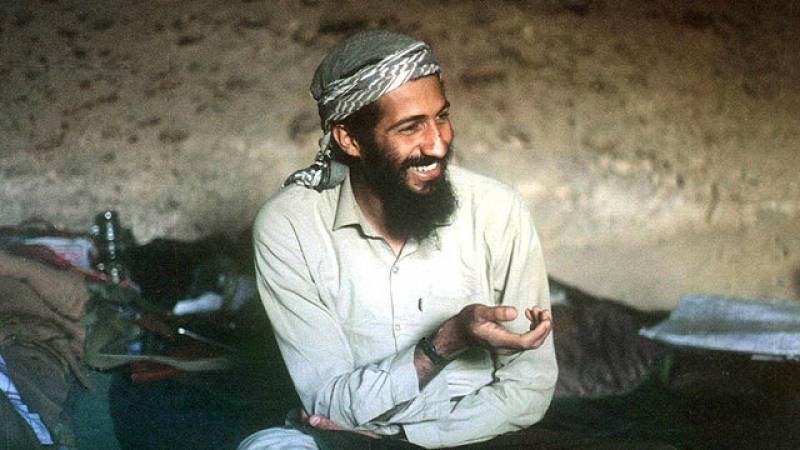
En lo que se refiere a la comparación entre conflictos, los medios de comunicación han insistido mucho comparando las imágenes de los últimos días en Saigón (Vietnam) con Afganistán, aunque se trata en realidad de dos conflictos diferentes sin relación alguna.
En 2011, en Paris, los talibán ya habían dado muestras de un cambio de postura (Conferencia de Chantilly entre afganos), habían comprendido su error que les había hecho perder el control de Afganistán y empezaron a adoptar un tono más dialogante y negociador.
En la Conferencia de Doha del 29 de febrero de 2020 se llegó a un acuerdo entre la Administración Trump y los talibán en el que los EE. UU se comprometían a retirarse de Afganistán y los talibán asumían el compromiso de no dar cobijo ni apoyo a ninguna actividad terrorista en territorio afgano que pudiese poner en peligro la seguridad de Estados Unidos. Este acuerdo incluía solamente a los talibán y excluía al resto de afganos que no se sentían representados. Por este motivo, la Conferencia de Moscú de marzo de 2020 fue organizada y contó con la participación del gobierno afgano, EE. UU., Rusia, China y Pakistán. En ella se hizo un llamamiento a todas las facciones afganas en guerra para alcanzar un acuerdo político negociado y evitar más confrontaciones.
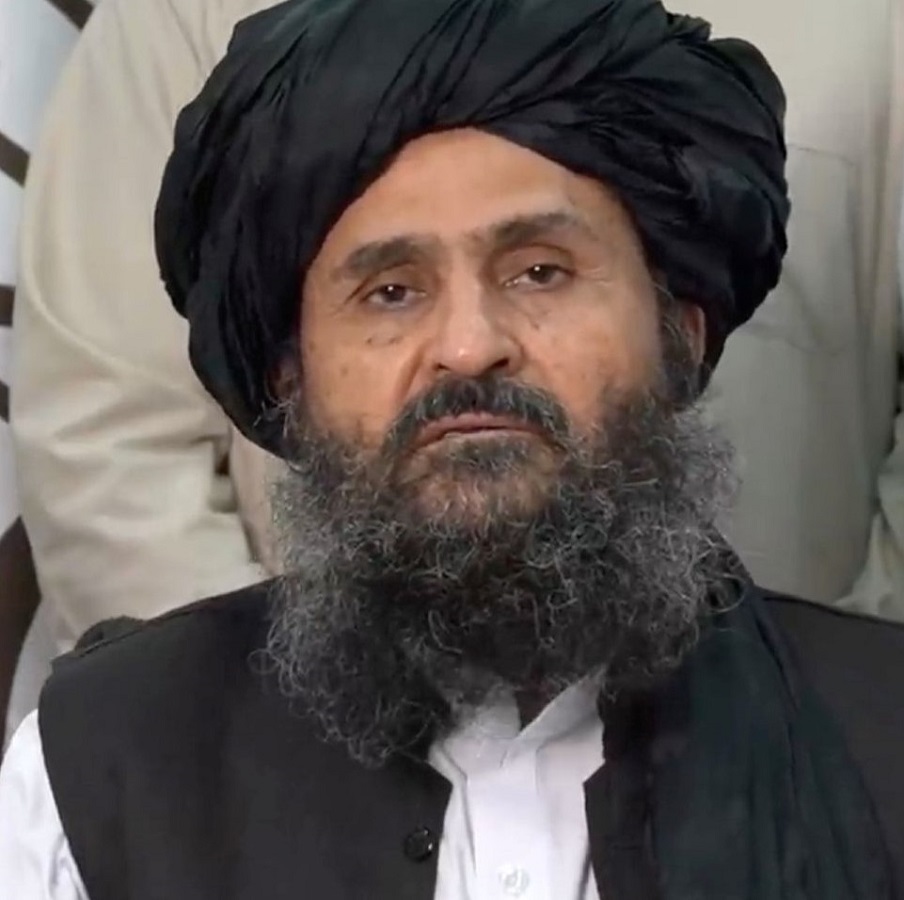
Los países de la Troika acordaron en esa conferencia reconocer la demanda del pueblo afgano de poner fin a la guerra y de alcanzar una paz justa y duradera. Los talibán han dicho que formarán un “gobierno inclusivo”, pero no será un gobierno de coalición, y que asumirán plenamente el poder, pero puede que nombren algunos miembros no talibán. El líder político de los talibán que ha negociado en Doha es el Mula Ghani Baradar quien será probablemente el futuro primer ministro.
LAS PIEZAS DEL TABLERO AFGANO
De las 34 provincias afganas, la única que resiste a los talibán es el Panshir, un foco antitalibán desde los años 90 y resistió la invasión soviética en los 80. Situada en un valle protegido por montañas a 65 kilómetros de Kabul donde viven 200.000 personas pertenecientes a la minoría tayika (que representan a una cuarta parte de los 38 millones de afganos). En este territorio vivió el comandante Massoud el león de Panshir.
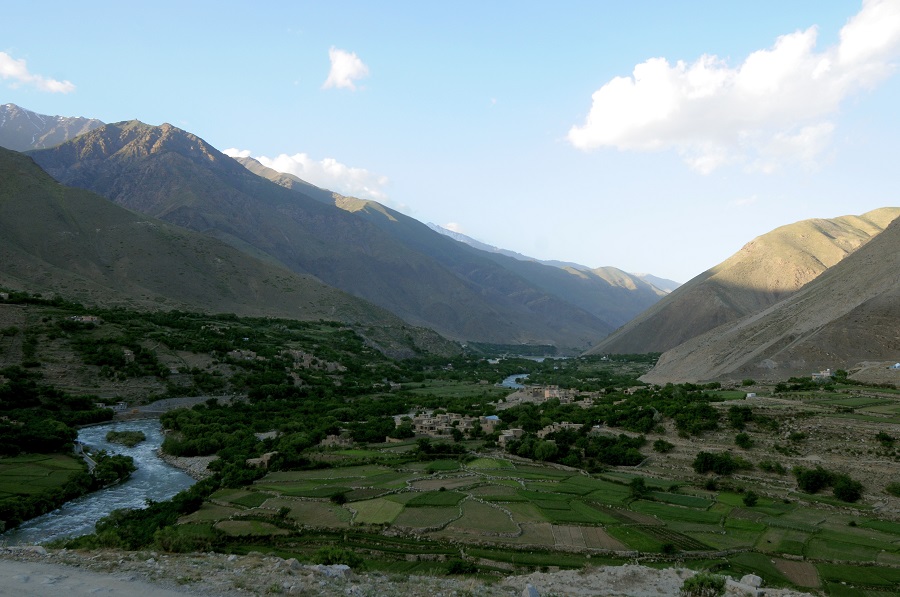
Este foco de resistencia no representa una amenaza suficiente capaz de desestabilizar al poder talibán. Al mismo tiempo, es un territorio que está en guerra desde hace 40 años, con una población muy cansada, por décadas de conflicto bélico.
El otro foco de resistencia es Kabul, la capital de seis millones de habitantes una población joven con acceso a las tecnologías. Los talibán esta vez han dicho que las mujeres podrían seguir trabajando, y estudiando (colegios, institutos, y hasta posiblemente la universidad). Hay mujeres empresarias y funcionarias. Pero la situación de las mujeres en las zonas rurales es radicalmente opuesta a la de Kabul. El tiempo dirá hasta donde aceptarán los vencedores ese espacio de libertad conquistado por las mujeres de la capital en las últimas décadas.
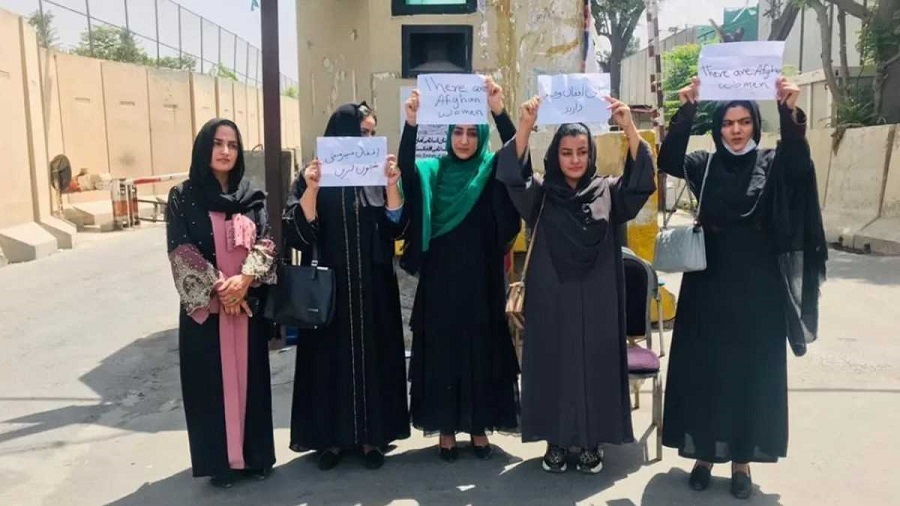
PAKISTÁN.- Los talibán siempre han tenido el apoyo de Pakistán, y todo el apoyo logístico y financiero de sus servicios secretos, cuya prioridad obsesiva desde hace 25 años es que los talibán se mantengan en el poder en Kabul.
CHINA.- Para China la prioridad es que los talibán no apoyen a la minoría uigur, musulmanes chinos objetos de una represión feroz por parte de Pekín, y los talibán han dado garantías al gobierno chino en este sentido. El interés principal de China es económico, el acceso a las materias primas y minerales en Afganistán donde Pekín ya ha comprado importantes concesiones. Para China, quien gobierne en el país no es importante porque lo consideran un país ingobernable.
RUSIA.- Para Rusia la prioridad es la estabilidad de las fronteras en su área de influencia en Asia Central y que no se dé cobertura al terrorismo de origen checheno. A los rusos tampoco les importa mucho quién gobierne, si sus intereses están garantizados.
IRÁN.- Irán, por su parte, ha pedido garantías para que la población chiita (rama mayoritaria del islam de Irán) no sufra esta vez la represión por parte de los talibán como en 1996. Los iraníes están satisfechos con el compromiso de los talibán en este sentido. Los talibán son muy conscientes de la reacción internacional y han dado garantías a cada uno de los actores internacionales, países vecinos que son también potencias regionales.
CEMENTERIO DE IMPERIOS
Como se puede ver recorriendo la historia del país, Afganistán es un país con unas características muy particulares y una tradición guerrera. La fortaleza del país es su debilidad. Las divisiones tribales y de clanes, geográficas, familiares, hacen que el país pueda ser únicamente gobernado por consenso y por una relación flexible entre el centro y la periferia. El rey afgano Mohammed Zahir Shah (1933-1973), fallecido en 2007, había conseguido mantener este equilibrio. La guerra fría lo destruyó con la rivalidad ente rusos y americanos.
Los soviéticos cometieron el error de invadir el país y luego los americanos cometieron el mismo error. Ninguno de los dos ha conseguido establecer un poder central estable.
El error americano fue ocupar un país enviando un ejército de 100.000 hombres para buscar a 25 terroristas, muchos de los cuales consiguieron escapar. Los yihadistas de Al Qaeda, son móviles, no tienen territorio, por lo que no tiene sentido ocupar un país, para combatir una organización terrorista que carece de base territorial.
VERSIÓN INGLESA
Afghanistan, tomb of empires
“The most formidable fighters in the world”, who descend from the hills “like great rocks falling, not running, but jumping […] These men are hard as nails; they can live on very little, and they only carry a rifle and a few cartridges”.
Andrew Skeen British General, 1932.
We can summarize the character of Afghans in a few words: their flaws are the spirit of revenge, envy, greed, looters and are stubborn. Their virtues are their passion for freedom, loyalty, caring for the most vulnerable (family, tribe, clan), hospitable, resistance, austerity, patience, determination, and prudence. They are less prone than other neighbouring countries to falsehood, intrigue, and deception.
Testimony of an official of the Kingdom of Kabul, 1815.
There is a story, told among British officers in the 1930´s that illustrates the contempt of tribal men for foreigners who came to occupy their country. A political official was conducting an inspection in a Pashtun district of the Northwest Border Province, in the border regions between present day Pakistan and Afghanistan. During the meal he asked one of the village chiefs which side his people would take in the event of a war between Britain and Russia.
«What do you want me to answer? Do you want me to answer what you would like to hear, or the truth?», asked the grey bearded old chief. The British officer prepared for the worst by asking his host that all he wanted was to hear the truth.
«Then I’ll tell you the truth”, (the chief chuckled) «we would sit on our hills watching them fight until we saw one of the two sides completely defeated, at which point we would descend to loot every mule of the vanquished! Praise God!”.
«Afghanistan is like a goat between two lions (in the context of rivalry between the Russian Empire and the British Empire fighting for control of Central Asia and the Caucasus during the 19th century)».
Afghan Emir Abdul Rahman Khan (1900).
In 1897, a then young journalist named ´Winston Churchill´, future British Prime Minister, stationed in Afghanistan with English troops, wrote that it was a country in which «every man is a soldier» and in which «the hand of every man it is against that of the other, and all in turn against the foreigner».
“Afghanistan is known as the graveyard of empires. We cannot take history lightly”.
General David Petraeus 2009 (Commander-in-Chief of US forces in Afghanistan).
The Afghanistan we know today emerged in the 18th century. It is a country that from the most remote times has been determined by its orographic system the Hindu Kush, a mountainous system that extends along 1000km from the northeast to the southwest and that is the western most extension of the Pamir Mountain ranges, the Karakorum and the Himalayas where they exceed 5000 meters of altitude.
The other geographic element, which makes access and control difficult for the invading armies, is to the north of the country, at Oxo River. This stretches for 2,540 kilometres and flows into the Aral Sea.
The geography of the country has been decisive in its history because due to its strategic location, it has been a crossroads of empires. Afghanistan has historically been a buffer state between three empires. India (Southeast), Persia (West) and Central Asia (North), the latter being successively populated by Scythians, Turks, Mongols, Uzbeks, and Russians.
Thus, Afghanistan has been the object of desire of empires for centuries. To name just a few of the most famous military leaders who have invaded are King Cyrus II The Great of Persia, Alexander The Great (331 BC) and Genghis Khan (1221-1222 AD). It is a territory that has become a strategic piece on the world geopolitical map and that will continue to be so.
Located in the centre of Asia, it shares a border with China, Iran, and Pakistan, and is close to India and Russia, a space where regional powers are very scrupulous in maintaining their areas of influence (i.e. Russia and China) an area that has always been very important for trade routes (e.g. silk road).
Afghanistan has important mineral reserves: cobalt, copper, chromium, gold, iron, zinc, gas, oil, iron, precious stones and especially lithium, the reserves of this mineral could be equivalent to those of Bolivia (which has a quarter of reserves around the world). There are also 74,000 hectares of poppies used for heroin production.
Afghanistan also produces 90% of the world’s opium.
XVIII century. Afghan Empire (1747-1823)
The imperial organization was the first form of state organization which included Afghanistan, Pakistan, part of Eastern Iran and Western India at that time. During this period the Ahmed Sah dynasty ruled the empire. A dynasty belonging to the main ethnic group of the country, the Pashtuns, who since then occupy the positions of the administration in the organization of the state.
With the decline of the empire from 1818, Afghanistan was divided for a short period into small kingdoms.
XIX century. Afghan Emirate (1837-1919)
Under this new administrative structure Afghanistan continues its history that takes place in a period that has been called ´The Great Game´ (1837-1907) which is about the rivalry between the Russian Empire and the British Empire for the control of Central Asia and the Caucasus during the 19th century.
The British Empire sought the expansion of the Indian Empire, but the Russian Empire wanted access to the Indian Ocean and the mineral riches of Central Asia. A situation of rivalry with intervening forces (i.e., the cold war) would end with the Russian defeat during the Russian Japanese war in 1905. In this context, the three Anglo-Afghan wars took place in which the British occupied Afghanistan to prevent this country from being under Russian control.
The first Anglo-Afghan War (1839-1842) ended in failure for the British. In the Second Anglo-Afghan War (1878-1880) the British were victorious by allowing the Afghans to maintain their internal sovereignty in exchange for giving control of their foreign relations to the British who promised to protect them from any attack by a foreign power. The Third Anglo-Afghan War (1919) allowed Afghans to regain control of their foreign policy and fully assume their independence.
Reign of Amanula Khan. Decade of Modernization (1919 -1929)
In 1919, with Afghanistan regaining its full sovereignty, coinciding with the departure of the British, a very important stage in the country’s history began. In 1923, the first constitution of the country was established with: individual freedoms were guaranteed, secular education for both sexes, classes for illiterate and nomadic adults, establishment of secular courts, abolition of privileges, women were not obliged to wear a veil, they were promoted to commercial relations with Europe and the first railway lines, dams, and numerous schools were built.
Following a conservative revolt this forced the king to abdicate for the benefit of his brother who would be overthrown days later by conservative soldiers who held power for only 6 months until the proclamation of a new king, ´Nadir Shad´ who was assassinated in 1933, and who was succeeded by his son ´Mohammed Zahir Shah´.
Reign of Mohmmed Zahir Shah (1933-1973)
Zahir Shah is undoubtedly the most important Afghan leader of the contemporary age. Under his reign, the country experienced an important era of stability. The King was educated in France at the time of his father’s reign.
Afghanistan joined the ´League of Nations´, although remaining neutral (they did not participate in either the first or second world wars) and during the Cold War it would be a non-aligned country.
In 1964, a limited parliamentary democracy was introduced with equal rights between men and women. This allowed the right for women to vote, and women’s work and education was recognized. At this time the obligation to wear burqas was abolished, Kabul University along with Kabul and Kandahar civil airports were created.
A very important aspect in the governance of the country and the stability of this reign was the consultation that the King made from the ´Loya Jirga´ (the great assembly of notable tribal and local leaders). This was a balance between the centre and the periphery (i.e. central and local authorities) which is something completely alien to western culture which ignores this very important aspect of the Afghan culture and was one of the reasons for the failure in the attempt to enforce a ´Western Model State´.
Afghanistan is a decentralized country where loyalty, agreements and negotiations with the local leaders is essential, and the importance in the deliberations of the ´Shuras´ (i.e. councils of elders that meet for specific issues) as well as the ´Loya Jirga´ which is the most representative national political structure.
In 1966, for the first time a woman was appointed to head the Ministry of Health.
Around this time, with an economic crisis, a succession of droughts, bad harvests, a climate of discontent, and in addition to the conservative sectors already unhappy with the modernization process, ´Mohammad Daud Khan´ (the King´s cousin and also brother-in-law) took advantage of the King being abroad. Daud Khan had previously been his Prime Minister and he seized the opportunity of the Kings absence to launch a coup by replacing his cousin the King.
A Republic was proclaimed, and after 5 years of authoritarian rule, Daud Khan was assassinated. From that moment on, the country’s leaders would already be related to Moscow. In 1979, the Soviet Union would invade Afghanistan.
“War in Afghanistan” (1979 -1989) “The Vietnam War of the Soviet Union”
To maintain a communist government, the Soviet Union invaded Afghanistan.
Groups of ´Mujahideen´ (religious extremists) began to fight the invaders with money and weapons provided by the United States, Pakistan, China, Iran, and Saudi Arabia.
The invasion killed 1.5 million people and created 5 million refugees. The Soviets never managed to defeat the Mujahideen in rural areas, however, they did control some cities and other urban centres. In the end, the Soviets would eventually withdraw from Afghanistan.
“Operation Cyclone” (1979)
This was the code name for the ´Central Intelligence Agency´ (CIA) program to recruit Islamic fundamentalists (later known as Mujahideen) against the government of the Democratic Republic of Afghanistan (1978-1992) and the Red Army (1979-1989).
The United States wanted to ensure that no other country than itself had control of the Persian Gulf and wanted to ensure that its naval forces protected the flow of oil to the west.
The other priority for ´President Carter´ and his ´National Security Advisor Brzezinski´ was to involve the Soviet Union in a long and costly conflict equivalent to the Vietnam War. This policy (Operation Cyclone) would be maintained and amplified by ´President Reagan´ who would come to call the Mujahideen «Freedom Fighters!!!!”.
“Communist Coup in Afghanistan” (1978)
In the period preceding 1978, we find that the two antagonistic forces are on one hand: the ´Communists´ (supported by the Soviets) and on the other hand ´Islamists´ (supported at first by Pakistan later by other countries). Both forces opposed the ´Traditional Afghan Islam´ whom were much more tolerant and locally implanted and disconnected from both political and religious central powers. These defenders of Afghanistan’s Islam were modernizers (JIA) and had the support of Kabul intellectuals including ´Burado Rabbani´ who would become president of ´The Islamic Republic of Afghanistan´ in 1992. One of the leaders of ´Jamiat-e Islam Afghanistan´ (JIA) was the famous ´Commander Massoud´, leader of the resistance against the Soviets, who would become Minister of Defence, and who was assassinated in a suicide bombing in Northern Afghanistan two days before the attacks of September 11, 2001.
It will be the Islamic fundamentalists outside the Traditional Afghan Islam who will introduce into the country the most extreme tendencies, ´Wahhabism´, and ´Salafism´, in the Madrasas (schools) and in the refugee camps with foreign financial aid (Pakistan, Saudi Arabia). In this context ´The Taliban´ movement emerged. (“the students”) who would seize power in 1996.
Until 2001, the ties between the ´Taliban´ and ´Al-Quaida´ were close. With the victory of the Taliban in 1996, the supporters of a moderate and modernizing Afghan Islam (Jamiat-e Islam Afghanistan) had lost any ability to influence. The period between 1989 and 1996 was characterized by confrontation (Afghan civil wars) between different factions in the interior of the country.
In response to the September 11th, 2001, attacks and as a revenge for the Taliban’s collaboration with Al-Quaida, NATO invaded Afghanistan in 2001 to 2021.
“Taliban Victory” (August 15th, 2021)
The Taliban have only needed ten days to reach Kabul despite the 83 billion dollars that the Americans have invested to build a modern army in Afghanistan.
The Americans had not foreseen the rapid collapse of the Afghan army and did not think that the Taliban had prepared an offensive strategy to reach Kabul so quickly.
The Taliban had already begun a few weeks earlier to control strategic border posts through of which Afghanistan supplies pass: Kandahar, Herat, and the Tajikistan border. In addition, the Taliban have been negotiating with local leaders and offering them guarantees and forging alliances during the occupation phase in their progression to the capital.
The Afghan army that has not resisted in the face of the Taliban advancement, and it collapsed for two reasons:
´Inadequate training and insufficient leadership´ of Afghan soldiers, many of them illiterate and lacking the necessary instruction to handle sophisticated weapons and equipment.
Secondly ´corruption´, the most decisive which explains the failure of the creation of a state in Afghanistan after two decades of occupation. Afghan soldiers didn´t receive salaries periodically, most of these salaries remained in the hands of their ranking officers, who in addition to not paying them, dedicated their time selling weapons on the black market.
The Taliban, aware of this situation, had no difficulties to obtain support among the soldiers who did not receive salaries from the army. These soldiers should have been paid with the money sent by the Pentagon, not to mention the problem of coordination between the American Diplomats on the ground (Secretary of State) who negotiate with the Taliban and the American Ministry of Defence.
“Two Lessons Learnt´
The first lesson learnt is the western failure of the establishment of a State and an army capable of guaranteeing the stability of the country. The widespread corruption has made this task impossible, as we have seen former ´President Karzai´ (2004-2014) was part of this system. His successor ´Ashraf Ghani´ (2014-2021) was not part of this corrupt organization but neither did he take any action to stop it.
The second lesson is that the Taliban have understood their downfall in 2001 was caused by September 11th, 2001, with their own collaboration with Al Qaeda. The mistake of its leader ´Mula Omar´ was to give shelter to ´Osama Bin Laden´. On the American side, no matter how much the comparison in the images with Saigon has been sought, the American withdrawal has nothing to do with Vietnam.
Already in Paris in 2011, the Taliban had shown signs of a change of position (Chantilly Conference among Afghans) the Taliban had understood their mistake and adopted a more dialogue and negotiating tone.
February 29th 2020, at the Doha Conference, an agreement was reached between the ´Trump Administration´ and the Taliban in which the US pledged to withdraw from Afghanistan and the Taliban agreed not to give shelter or support to any terrorist activity on Afghan soil that could endanger the security of the United States. This agreement included only the Taliban and excluded the rest of Afghans who did not feel represented. For this reason, the Moscow Conference was organized a month later (March 2020) with the participation of the Afghan government, the US, Russia, China, and Pakistan in which a call was made to all the Afghan factions at war to reach a negotiated political settlement and avoid further confrontations. The Troika countries agreed at that conference to recognize the demand of the Afghan people to end the war and to achieve a just and lasting peace. The Taliban have said that forming an «inclusive government» will not be a coalition government, they will fully assume power, but they may appoint some non-Taliban members. The political leader of the Taliban who negotiated in the Doha conference is ´Mula Ghani Baradar´ and who will probably be the future prime minister.
“The Pieces of the Afghan Board”
Of the 34 Afghan provinces, the only one that resists the Taliban is the ´Panjshir´, an anti-Taliban focus since the 1990´s and which resisted the Soviet invasion in the 1980´s. Located in a valley protected by mountains 65 kilometres from Kabul where 200,000 people live belonging to the ´Tajik´ minority (representing a quarter of the 38 million Afghans) the territory where ´Commander Massoud the lion of Panjshir´ lived.
This province is a source of resistance that does not represent a threat capable of destabilizing the Taliban power. At the same time, it is a territory that has been at war for 40 years with a population very tired by decades of warlike conflict. The other focus of resistance is Kabul, the capital of 6 million inhabitants, a young population with access to technology.
The Taliban this time have said that women could continue working, and studying at schools, university etc. There are also women entrepreneurs and civil servants and judges. The situation of women in rural areas it is radically opposite to the situation in Kabul, time will tell how far they will accept that space of freedom conquered by the women of the capital in recent decades.
The Taliban have always had the support from Pakistan, with logistical and financial support they have received from their secret service, whose obsessive priority for the last 25 years has been that the Taliban remain in power in Kabul. For China, the priority is that the Taliban do not support the ´Uighur´ minority (Chinese Muslims) who are subjected to fierce repression by Beijing. The Taliban have given guarantees to the Chinese Government in this regard. China’s main interest is economic, access to raw materials and minerals in Afghanistan where Beijing has already bought important concessions. For China, who governs the country is not important to them because they consider Afghanistan an ungovernable country. For Russia, the priority is the stability of the borders in its area of influence in Central Asia and that terrorism of Chechen origin is not covered, the Russians do not care much who governs if their interests are guaranteed. Iran, for its part, has asked for guarantees so that the ´Shiite´ population (majority branch of Islam in Iran) will not suffer repression by the Taliban as in 1996. The Iranians are satisfied with the commitment of the Taliban in this regard. The Taliban are aware of the international reaction and have given guarantees to each of the international actors (neighbouring countries that are also regional powers).
“Afghanistan, Cemetery of Empires”
As we can see by going through the history of the country, Afghanistan is a country with very particular characteristics and a warrior tradition. The strength of the country is its weakness. The tribal clans, geographical and family divisions mean that the country can only be governed by consensus and by a flexible relationship between the centre and the periphery. The Afghan King Mohammed Zahir Shah (1933-1973), who died in 2007, had managed to maintain this balance. The cold war destroyed this balance with the rivalry between the Russians and the Americans. The Soviets made the mistake of invading it and then the Americans made the same mistake. Neither has succeeded in establishing a stable central power.
The American´s mistake was to occupy a country sending 100,000 troops to search for 25 terrorists, many of whom managed to escape. The ´Jihadists´ of Al Qaeda are mobile, they have no territory, so it makes no sense to occupy a country to fight a terrorist organization that lacks a territorial base.
(Iván Cedrón Adam es un profesional con una amplia formación académica en Lenguas extranjeras, Literatura francesa, Derecho, Management y Liderazgo, y un gran conocedor del mundo anglosajón y de Francia y Gran Bretaña, países donde ha vivido durante dos décadas).
SOBRE EL AUTOR
Iván Cedrón Adam, prototipo de europeo moderno y activo y experto europeísta
OTRAS INFORMACIONES
La España de Colón no es la España del siglo XXI
Los mitos, una amenaza para la convivencia
El renacer de una ciudad de frontera
Estados Unidos, 3 de noviembre, un momento verdaderamente histórico
El Reino Unido, en una encrucijada histórica


